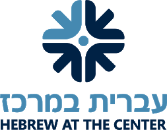Milestone Celebration in Seventh Grade: Siyum Sefer Shemot
March 18, 2021 by
This week, seventh grade celebrated their Siyum upon completing the Book of Shemot (Exodus), which they have been learning since fifth grade. In preparation for the siyum, students reflected on their work and learning, and chose different ways of representing the knowledge and skills they had acquired over the multi-year period.
Reflecting on Meaningful Projects: Some students chose to reflect upon projects they had completed over the years and utilized narrated slides and story boards to showcase their classmates’ projects. These included digital representations of the 10 plagues from fifth grade, and comparative art pieces showing multiple commentaries of the splitting of the Red Sea from sixth grade. Another group reflected on the journals they created in sixth grade, in which students put themselves in the story and wrote journal entries as Israelites in the first 40 days of their journey in the Wilderness. Yet another group shared their Grade 6 projects depicting the 10 commandments, while a different group of students focused on seventh grade dioramas of the Mishkan (Tabernacle) and the different services and vessels they each created.
Revisiting Text as Advanced Learners: Other students chose to revisit a topic they had previously learned and approach it from a more in-depth perspective, as more advanced learners. One group chose to focus on Moshe’s evolution as a leader of the Jewish people, and engaged in a nuanced debate about his emotions and motivations. Another group chose to revisit the fifth grade topic of the midwives’ defiance of Pharaoh, and what they represent for us today. A third group parsed the different interpretations of the phrase “a new king arose over Egypt, who didn’t know Yosef.” A fourth group looked back on their study of the Golden Calf and the top 5 facts they had learned.
Applying Hebrew-Language and Analytical Skills: A third way that students chose to reflect on their years of learning the Book of Shemot was through the skills they have acquired and honed over the years. One group chose to compile “The Top 10 Questions We’ve Asked Over the Years”, focusing on the skills of asking interpretive questions, and responding to the questions of others. Another group compiled “The Top 5 Commentaries We’ve Learned Over the Years,” by actually going back into the text of the commentaries, and re-learning them in Hebrew to gain a deeper level of understanding than they might have achieved as a younger student.
Celebrating the Cycle of Learning: The final part of a Siyum is traditionally the reading of the last line of the book being completed, followed by the Hadran text, and the reading of the first lines of the next book that will be learned. This represents the continuing cycle of learning that all the students are engaged in. Since COVID restrictions prevented all of us from being together in person, our Siyum was virtual this year and multiple students had the opportunity to share the reading of the traditional Hadran text in the original Hebrew as well as in English. Students also recorded themselves reading and even chanting the last verse of the Book of Shemot, and the first verse of the Book of Bamidbar, which the students will dive into next.
See the video of student presentations.
We closed out the morning by presenting the students with their new Chumash of the Book of Bamidbar (Numbers) to add to their growing collection of Jewish literature. Mazal Tov to the seventh graders and their families!






